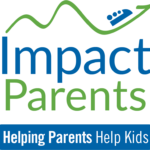Understand Your Kid’s ADHD Brain to Be a Better Parent

Despite the fact that scientists' understanding of ADHD has grown by leaps and bounds in the past 1-2 decades, this condition remains an enigma to most of us. In the day-to-day struggle, we parents still find ourselves asking the same questions repeatedly:
•“What were you thinking?”
•“Why did you do that?”
•“Why isn't this done yet?”
But with all the new science, isn't there a way to help parents of children with ADHD get through the day? As a physician with ADHD who is raising two children with ADHD, I have grappled with these questions often – and finally crafted a solution. The KNOW/GO Model incorporates science into everyday language that parents can use easily. Not only does this help parents understand their children better, but also it limits the negative messages we are inadvertently giving our kids, messages that can cause long term damage to their self-esteem.
Understanding the KNOW and GO Sides of the Brain
I like to think of ADHD this way: Imagine that there are 2 different functional areas of the brain. (This is not about brain “geography,” but rather about brain “function.”)
Let's call one part of the brain the “KNOW” part. This is the part of an individual's brain that is in charge of storing information and intentions, including how to behave in a given situation, how to complete one's homework each day, and how to please one's parents and teachers and avoid getting into trouble, for example. This is where decisions are made about which of a person's impulses are “good” ideas that should be acted upon, or “bad” ones that should be rejected.
Now let's call the other functional part of the brain the “GO” area. This is the part of the brain that is in charge of making things happen, or not happen, as the case may be. This part of the brain says “Go” when you have an impulse to move, speak, yell, or eat a cookie (despite the fact that you know cookies are not allowed before dinner). This is also the part of the brain that gets you moving when it is time to get off the couch and start your homework, do your chores, clean your room, or do other “non-preferred tasks.” It has no capacity for deciding whether the actions it drives are “good” ideas or “bad” ones. It just acts on impulses as they come in.
These 2 functional parts of the brain can work together fairly seamlessly in individuals who do not have ADHD. The “KNOW” side realizes that it is time to do homework and tells the “GO” side to make it happen. Likewise, when a non-ADHD individual has an impulse to jump on the couch, the “KNOW” side successfully sends a “REJECT” message to the “GO” side, ensuring that it resists the temptation.
Article continues below...
What's Your Parenting Style?
Take a quiz to find out what kind of a parent you are.
Understanding the KNOW and GO sides of the ADHD Brain
Now that we understand the functioning of the “typical” brain, we can get a better understanding of how the ADHD brain differs. Due to the atypical wiring in the brains of individuals with ADHD, the internal communication between the KNOW and GO areas is IMPAIRED.
When describing the ADHD brain, scientists call the neurons that are the pathway for information flow between the two brain areas “sleepy neurons.” (These neurons correspond to the yellow arrows in the diagram.) The “KNOW” side can't wake up those sleepy brain cells enough to get through to the “GO” side, resulting in a lot of difficulty getting off the couch! Likewise, in the child with ADHD, the “GO” side up and jumps without ever receiving the message that his “KNOW” side was trying to deliver: there will be a hefty price to pay when Mom sees me on the furniture! The ADHD brain requires extra stimulation in order to wake up its sleepy neurons and effectively communicate with itself. (This disconnect is represented by the black lines across the yellow arrows.)
The Long-Term Consequences
Children learn about themselves and develop their self-esteem primarily by looking into the mirrors that the world holds up for them to see. When the teacher tells Sally that she is “lazy,” or the coach tells Johnny that he “never listens,” those children develop a negative understanding of who they are, which sets up a cycle we want to avoid!
This model helps us shape our responses to what we see our children do (or not do). Each time we react to our kids by using what the scientific community has learned, we can stop moral judgments and stop telling our children that they are “bad decision makers.” For example,
- We can understand that they do not make the decision to jump on the couch -- their “GO” side makes their bodies do it.
- They do not (usually) decide not to do their homework -- they just never quite get around to making it actually happen.
When we understand what is driving our children to do the often-unimaginable things they do, we stop holding up ugly, negative mirrors that lead to demoralization and poor self-esteem, all too frequent outcomes for our children. When we consider the KNOW/GO model of ADHD behavior, we can parent with supportive, loving strategies, instead.
- We can support our children as they fight against sleepy brains (a mini-trampoline in the house is great for kids who just can't suppress the need to jump.)
- We can help stimulate their brains when it is time to learn facts (interesting, relevant stories can wake up neurons enough to help kids remember the information.)
When we take into account the neurological disconnect that comes with the territory with ADHD, we can stop asking the questions that we already know the answer to, like “What were you Thinking?!?” or “Why would you DO such a thing?!?” The KNOW/GO model tells us what our kids have been telling us all along: “I don't know. I wasn't thinking. I just did it.” Yes, he knows better. Yes, she knows that you have told her 100 times that this behavior is unacceptable. No, he is not doing these things just to torture you.
So print out the diagram and post it where you can see it daily. Remember, before you start asking those questions next time, to think about KNOW/GO. As parents of children with ADHD, it is our job to change our own behaviors in order to improve the outcomes for our kids.


